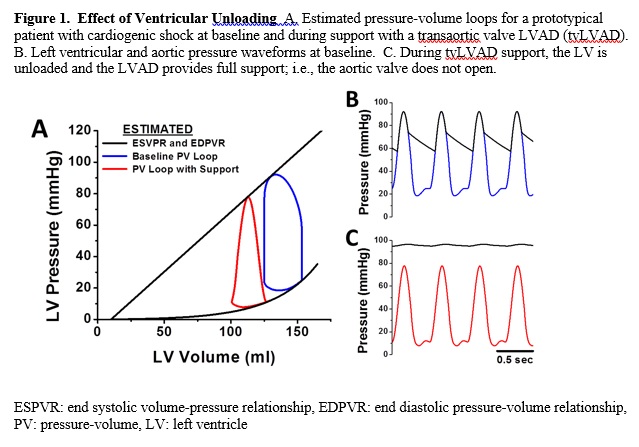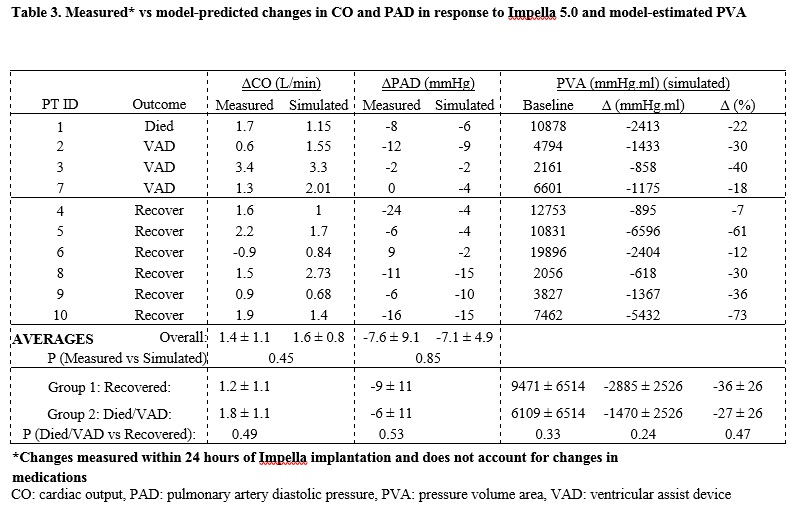Presenting Author:
Principal Investigator:
Chris Malaisrie, M.D.
Department:
Surgery
Keywords:
LVAD, cardiogenic shock, heart failure
Location:
Ryan Family Atrium, Robert H. Lurie Medical Research Center
C130 - Clinical
Clinical and Simulated Outcomes after Transvalvular LVAD for Cardiogenic Shock
Optimal treatment is not established in cardiogenic shock (CS). We report our experience using a transvalvular LVAD (tvLVAD), the Impella 5.0, and ventricular recovery in patients with CS. Fifteen patients with CS received a tvLVAD and had hemodynamic measurements available before and within 24 hours after device insertion. Clinical data and total LV mechanical work estimated from a cardiovascular simulation were used to evaluate factors correlated with myocardial recovery. Simulation parameters were adjusted to match baseline hemodynamics of each patient, and the simulation then predicted the impact of Impella on hemodynamic parameters including pressure-volume area (PVA). Twelve patients (80%) were bridged to recovery or permanent VAD. 30-day mortality after tvLVAD was 20% and no patients had limb ischemia. The simulation accurately predicted measured Impella-induced average changes in cardiac output (1.1±1.0 vs 1.4±0.06, p=0.25) and pulmonary artery diastolic pressure (-8.0±8,9 vs -7.1±4.9 mmHg, p=0.73). Estimated PVA averaged 9928±6297 mmHg.ml and decreased by 2370±2022 mmHg.ml. Patients who recovered had a greater reduction in PVA (-19±26% vs -36±26%, p=0.19). Successful bridging of patients with tvLVAD was possible with minimal device-related complications. The simulation accurately predicted acute hemodynamic effects of Impella and suggested that patients with greater percent of myocardial unloading had increased survival.


